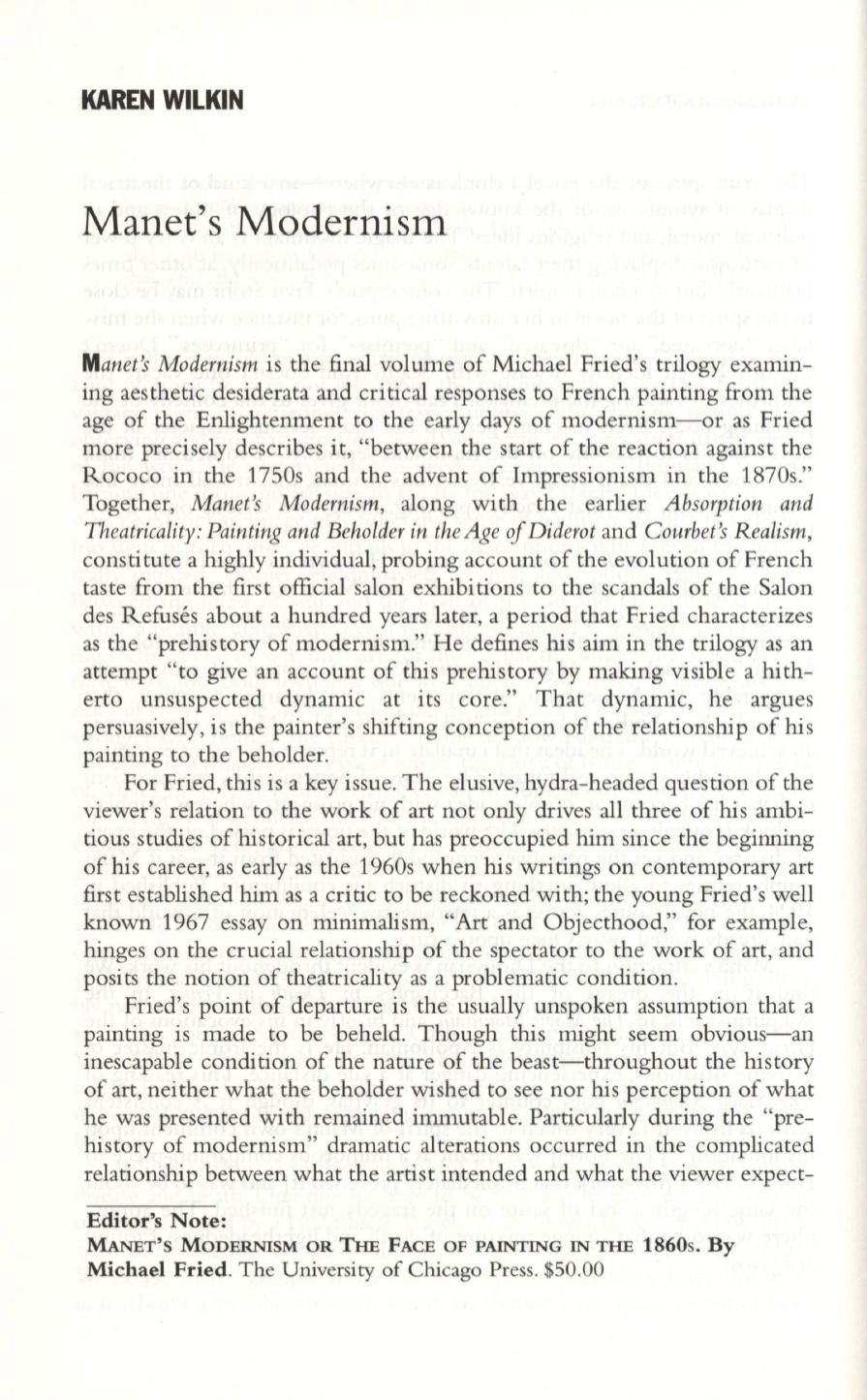
KAREN WILKIN
Manet' s Modernism
Manet1 Modernism
is the final volume of Michael Fried's trilogy examin–
ing aesthetic desiderata and critical responses to French painting from the
age of the Enlightenment to the early days of modernism-or as Fried
more precisely describes it, "between the start of the reaction against the
Rococo in the 1750s and the advent of Impressionism in the 1870s."
Together,
Manet's Modernism,
along with the earlier
Absorption and
Theatricality: Painting and Beholder in the Age ofDiderot
and
Courbet1 Realism,
constitute a highly individual, probing account of the evolution of French
tas te from the firs t official salon exhibi tions to the scandals of the Salon
des Refuses about a hundred years later, a period that Fried characterizes
as the "prehistory of modernism." He defines his aim in the trilogy as an
attempt "to give an account of this prehistory by making visible a hith–
erto unsuspected dynamic at its core." That dynamic, he argues
persuasively, is the painter's shifting conception of the relationship of his
painting to the beholder.
For Fried, this is a key issue. The elusive, hydra-headed question of the
viewer's relation to the work of art not only drives all three of his ambi–
tious studies of historical art, but has preoccupied him since the beginning
of his career, as early as the 1960s when his wri tings on contemporary art
first established him as a critic to be reckoned with; the young Fried's well
known 1967 essay on minimalism, "Art and Objecthood," for example,
hinges on the crucial relationship of the spectator to the work of art, and
posits the notion of theatricality as a problematic condition.
Fried's point of departure is the usually unspoken assumption that a
painting is made to be beheld. Though this might seem obvious-an
inescapable condition of the nature of the beast-throughout the history
of art, neither what the beholder wished to see nor his perception of what
he was presented with remained immutable. Particularly during the "pre–
history of modernism" dramatic alterations occurred in the complicated
relationship between what the artist intended and what the viewer expect-
Editor's Note:
MANET'S M ODERNISM OR T HE F ACE OF PAINTING IN THE
1860s. By
Mich ael Fried. The University of Chicago Press. $50.00


